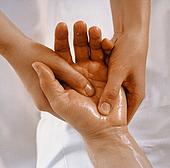While we are all familiar with the meaning of the word ‘anxiety’ and we are likely to have experienced a certain degree of anxiety at some point in our life, it’s important to distinguish between healthy and unhealthy anxiety. Healthy anxiety is experienced before a meaningful event in life such as a job interview, a class test or a presentation and it actually helps the person to maximise their performance, therefore it’s enabling. On the other hand, unhealthy anxiety is disabling as it hinders proper functioning and it’s not necessarily related to a specific event. There are several types of disorders associated with anxiety. These are briefly outlined below in alphabetical order.
– Illness Anxiety Disorder: the individual experiences excessive health anxiety and believes that he has a serious illness.
– Obsessive-compulsive disorder: the individual holds irrational beliefs which cause anxiety and lead him to performing a specific behaviour repeatedly, e.g. compulsively washing one’s hands due to the belief that they are covered in germs.
– Panic disorder: the individual experiences unexpected bouts of intense anxiety.
– Phobia: the individual has an extreme fear of an object, activity or situation which causes anxiety.
– Post-traumatic stress disorder: the individual develops anxiety following a stressful life event.
– Separation anxiety disorder: the individual is anxious about being apart from loved ones or being away from home.
– Social anxiety disorder: the anxiety comes from an excessive fear of the judgement of others in social situations.
In spite of the fact that anxiety can take many forms, this article focuses on a medical condition known as Generalised Anxiety Disorder (GAD).
What are the symptoms of Anxiety?
According to the Diagnostic and Statistical Manual of Mental Disorders (DSM – V), for an individual to be diagnosed with GAD he must experience a constant and unsubstantiated worry almost every day for most of the time such that it interferes with and disrupts daily activities. The actual diagnostic criteria are the following:
1. excessive anxiety, worry and apprehension about several activities or situations (e.g. school, work and finances) most of the time for at least 6 months.
2. the worry is difficult to control.
3. the worry is associated with at least 3 of the 6 physical and cognitive symptoms outlined below:
3.1 Restlessness or being on edge
3.2 Fatigue
3.3 Difficulty concentrating
3.4 Being irritable
3.5 Experiencing muscular tension
3.6 Having sleep disturbance (whether related to falling or staying asleep)
For children, only 1 of the symptoms above is required for diagnosis.
4. the anxiety or worry and the symptoms associated with it cause significant distress and impair the individual’s ability to function in one or more areas (work, school, family, social).
5. the symptoms experienced cannot be attributed to any substance use (e.g. drugs or medication) or to a medical condition that has similar symptoms (e.g. hyperthyroidism).
6. other mental disorders, such as other specific types of anxiety, cannot explain the symptoms better.
Worth mentioning is that GAD shares a number of symptoms with Depression and these two mental disorders are often co-morbid, that is they occur together. These are the shared symptoms:
- sleep disturbance
- agitation
- dysphoria (feeling uneasy or dissatisfied)
- fatigue
- difficulty concentrating
- restlessness
- irritability
- worry
- anxiety
- tension
What are the risk factors of Anxiety?
Genetics account for a third of the diagnoses of GAD, whereby a life stressor often acts as a trigger. In many cases, GAD is due to long-term substance use, such as in the case of benzodiazepines (anti-stress medication), alcohol, tobacco and caffeine. However, the way in which genes and environmental stress interact in the development of GAD is not clear yet.
There are gender differences in the development of GAD, with women being twice as likely to develop the disorder than men. This has been attributed to hormonal differences between the sexes.
How can you control your Anxiety?
In those cases where GAD is induced by the use of either benzodiazepines or alcohol, abstinence from such substances results in the disappearance of anxiety-related symptoms. However, returning to normal levels of anxiety can take time (up to two years after giving up alcohol) and symptoms are initially made worse by withdrawal.
While anti-anxiety medication will promptly reduce the physical symptoms of anxiety such as decreasing heartbeat and making the person feel more relaxed, it will not address its causes. As mentioned above, the main symptom of GAD is unsubstantiated worry. This means that irrational thinking has taken over the cognitive processes of the individual leading him to perceive reality in a more threatening, dangerous, irreparable way. While this is a natural mechanism of survival, if a danger response is triggered unnecessarily than it actually becomes harmful.
One of the most successful therapies used to control anxiety is cognitive behavioural therapy which tackles the irrational thoughts that the individual experiences and replaces them with more realistic thoughts. More generally, the therapist helps the individual to see the behaviour is informed and depends on our feelings and thoughts. Some of the specific psychological mechanisms involved in anxiety are past traumatic experiences which affect the way in which the individual sees the future, intolerance of uncertainty, ineffective emotional processing and understanding. Therapy can also tackle the specific psychological mechanism identified as the culprit. The majority of treatments include a relaxation technique component as this will help the individual to recognise and manage the physical symptoms of anxiety.
Whichever the chosen treatment, the individual will need to put a lot of effort and time into changing the automatic negative thoughts that lead to anxiety.
If you have found this article helpful, I’d like to hear from you.




